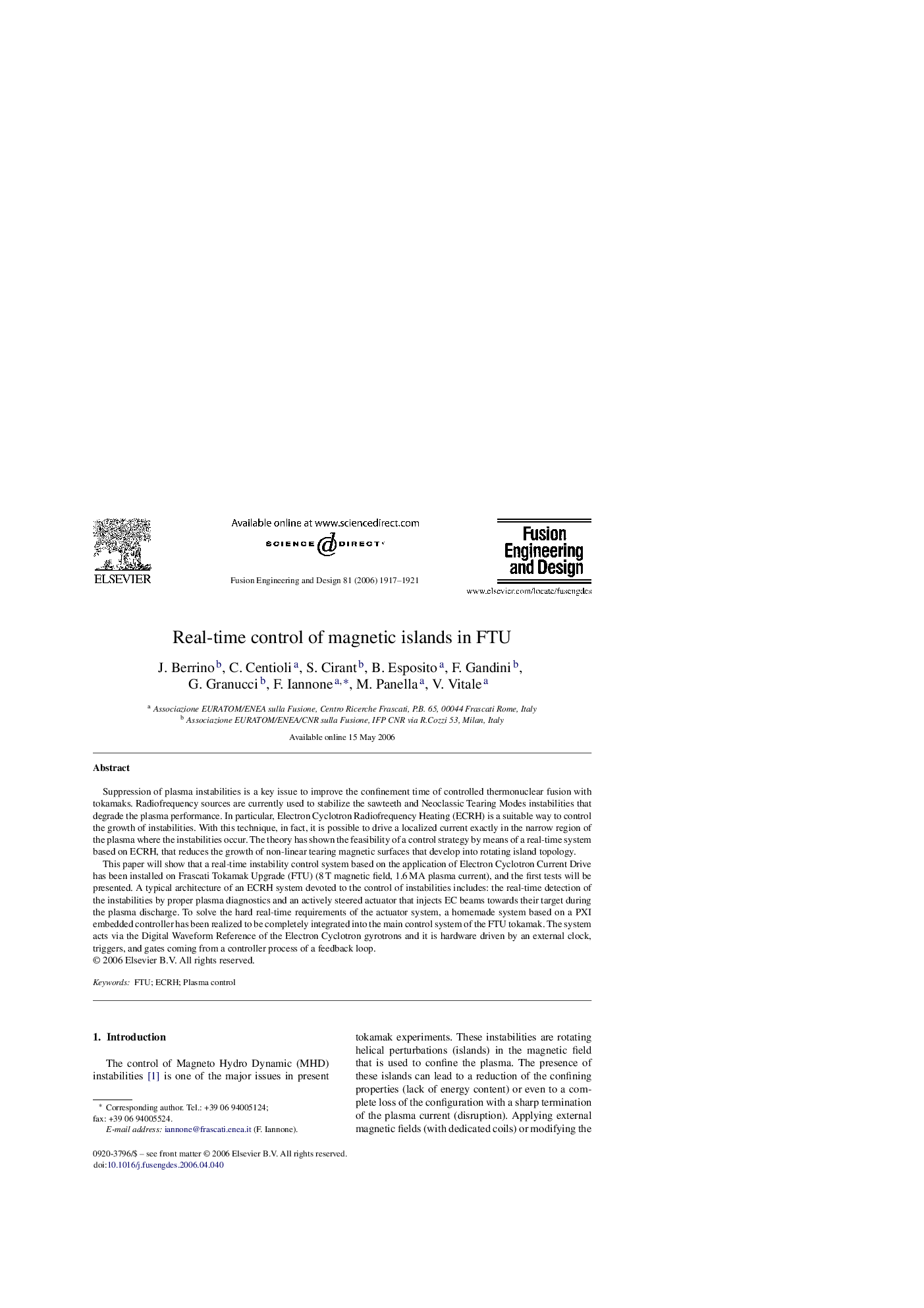| Article ID | Journal | Published Year | Pages | File Type |
|---|---|---|---|---|
| 273788 | Fusion Engineering and Design | 2006 | 5 Pages |
Suppression of plasma instabilities is a key issue to improve the confinement time of controlled thermonuclear fusion with tokamaks. Radiofrequency sources are currently used to stabilize the sawteeth and Neoclassic Tearing Modes instabilities that degrade the plasma performance. In particular, Electron Cyclotron Radiofrequency Heating (ECRH) is a suitable way to control the growth of instabilities. With this technique, in fact, it is possible to drive a localized current exactly in the narrow region of the plasma where the instabilities occur. The theory has shown the feasibility of a control strategy by means of a real-time system based on ECRH, that reduces the growth of non-linear tearing magnetic surfaces that develop into rotating island topology.This paper will show that a real-time instability control system based on the application of Electron Cyclotron Current Drive has been installed on Frascati Tokamak Upgrade (FTU) (8 T magnetic field, 1.6 MA plasma current), and the first tests will be presented. A typical architecture of an ECRH system devoted to the control of instabilities includes: the real-time detection of the instabilities by proper plasma diagnostics and an actively steered actuator that injects EC beams towards their target during the plasma discharge. To solve the hard real-time requirements of the actuator system, a homemade system based on a PXI embedded controller has been realized to be completely integrated into the main control system of the FTU tokamak. The system acts via the Digital Waveform Reference of the Electron Cyclotron gyrotrons and it is hardware driven by an external clock, triggers, and gates coming from a controller process of a feedback loop.
